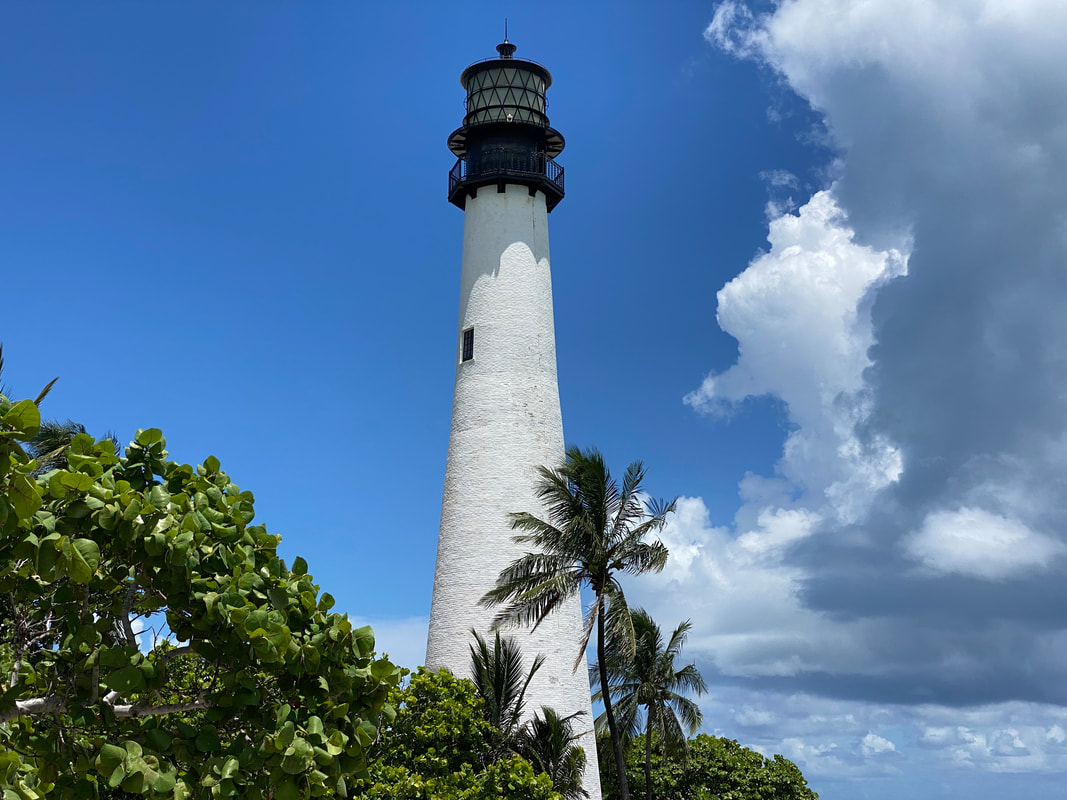|
By Steve Richards Is this musket ball the oldest firearm artifact in South Florida? Can the history of South Florida be told through one tiny artifact? A single musket ball? Looks like. So much so that we could easily dedicate an entire film to tell the stories it inspires. Stories that cover more than 300 years, from Ponce De Leon in 1513 to the sacking of the Cape Florida Lighthouse in 1836 – and the pirates in between. It all starts in Key Biscayne with Ponce De Leon stepping foot on the island just across the Rickenbacker Causeway from Miami in 1513. Looking for gold, the Fountain of Youth, and easily enslaved natives – none of which he found - he didn’t stay long. But we can assume he brought Matchlock Muskets with him. (Ponce was on Columbus’ second expedition to the New World). That being said we have no surviving artifact(s) from the visit. Or do we? We are in the process of identifying and documenting the oldest guns from South Florida’s history for our new documentary So Flo Guns. This musket ball was found near the Cape Florida Lighthouse at the very tip of Key Biscayne. Built in 1825 it is the oldest structure in South Florida and the site of a Seminole sacking in 1836 – a major event of the Seminole wars of Andrew Jackson’s day. In research for the film I knew that Key Biscayne and Cape Florida were huge to the story. So out I drove one afternoon and was directed by the guardhouse rangers to Art Levy, Park Services Specialist at Bill Baggs Cape Florida State Park. He is the keeper of the archives, and the stories. He’s also about to retire and is organizing the materials which have been collected over the years so he can pass them down to the next keeper of the flame before he leaves in October. When I told him what I was up to he quickly pulled from deep in an old filing cabinet the musket ball he is holding. It had apparently been dug up by a beachcomber with a metal detector back in 1981. This is likely a very important artifact given its provenience, a fancy word that basically means we know when, where, and even who found it. And given that Art has tucked it away all these years we can also assume it’s not forgery, not that anyone would bother. Certainly old musket balls aren’t uncommon. But the only known musket ball dug up on Cape Florida? Now that’s fascinating and could fill a film or two on its own just from all the imagining it generates. Like what? Well, it comes down to not really knowing what this musket ball is, when it was presumably fired, who fired it, where it was made, etc. All of which is the purview of archaeologists, scientists, and others that dig into such things. There seem to be several possibilities which include:
I suggest we treat it with the respect it deserves and bring in scientists. Because while it is perhaps most likely that this musket ball is from the 19th century, we really don’t know. So we will be reaching out in the course of filming So Flo Guns to historians, archaeologists, metallurgists, gun experts, and the like.
For instance, we can perhaps determine the source of the lead in the ball with lead isotope analysis and other research methods to know whether the ball is of American or Spanish origin. Or somewhere else. This might also help determine who shot it – assuming it was shot at all. A fascinating study of lead artifacts from the Lewis and Clark Expedition goes into tremendous depths along these same lines and presumably gives a road map for how to research our little ball. Elemental analysis of nineteenth century lead artifacts from Lewis and Clark and Hudson's Bay sites of the Pacific Northwest (umt.edu) We can also examine the caliber and structure of the ball itself and match it to others that exist in musket ball databases. Who cares? Anyone who is interested in guns in America and how we got to our present-day gun environment. Is it 16th century Spanish or 19th century American? Was it fired by a Seminole or one of two lighthouse keepers fighting for their lives. We may never know. But It certainly shows how such a little thing can get us asking the right questions. A potential next step? The Geochron Laboratories / Krueger Enterprises Isotopic Analyses (geochronlabs.com) outside Boston. They are the ones that can tell us what there is to be known about the metallurgy and chemical makeup of the ball if Art and the folks at the park on Cape Florida would allow.
0 Comments
|
Archives
April 2024
Categories
All
|
TheoEco Institute is a 501(c)(3) nonprofit organization. Contributions to TheoEco in the United States are tax exempt to the extent provided by law.




 RSS Feed
RSS Feed